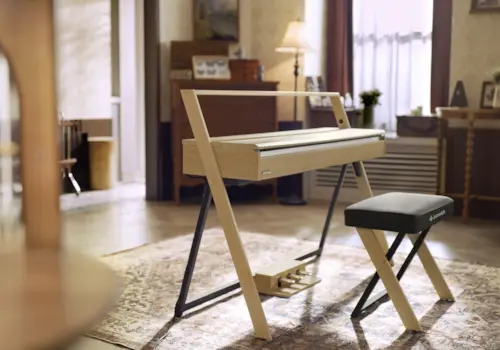The invention is an attachment to an acoustic piano that uses magnets to resonate piano strings, allowing a musician to sustain notes indefinitely.
It can also trigger notes by using interfaces other than the keyboard.
Because it is a modular attachment, the Electromagnetic Piano can be applied to all the strings on a piano, just a few strings on a piano, or even to multiple pianos. This allows traditional acoustic piano sounds to play simultaneously with the magnetically generated sounds.
How does it work?
The piano features a series of electromagnets, one for each note, which are suspended above the strings of a grand piano. Each one is controlled through a MIDI interface.
An electromagnetic field is created by the MIDI signal controls. This causes the corresponding strings to vibrate, indefinitely if required.
The source of the MIDI signal can be any MIDI device, including a keyboard, and a computer/digital workstation. This allows the piano to be played acoustically by one pianist, whilst a second musician is creating a counterpoint using a Midi controller actuating the strings electronically.

The MIDI signal can be controlled by any device which, as seen above, can be attached to the hands
Dave Smith, Guthman Competition Judge, comments, "When reviewing the entries as they came in, the Electromagnetic Piano jumped out at me... The idea of taking a basic, run-of-the-mill piano and being able to do all this new stuff fairly easily, to me is appealing. I hope more musicians can learn about it and take advantage of it."
Images: ©YouTube/Georgia Tech School of Music








